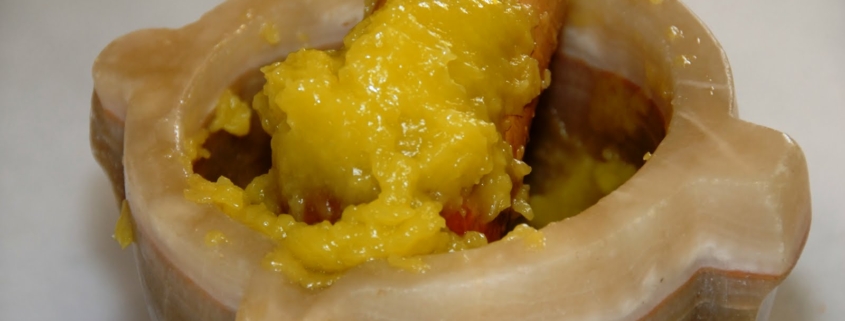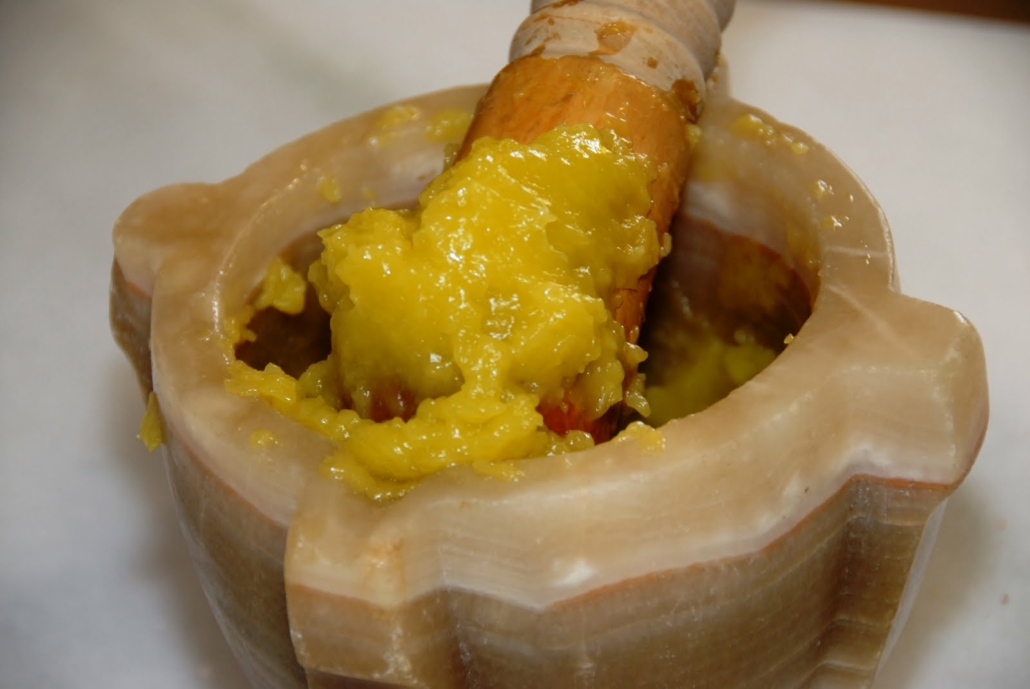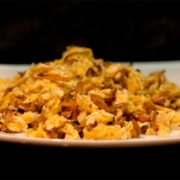Traditional Spanish Recipe for Alioli
The simplest things in ife are often the best and this is the secret to making traditional Spanish Alioli. How to pronounce it, well it isn´t very difficult… “Al-ee-ohlee”, the Spanish version as opposed to the French aïoli. So then, how much difference is there between the two? Well, you could say that alioli is the less polite relative of aïoli and we mean that in the nicest possible way, because with its pungent garlic flavour combined with fruity extra-virgin olive oil, it’s not for the faint-hearted.
Alioli has a long history. It is mentioned in the writings of Pliny the Elder (AD 23-79), a Roman procurator for a year on the Catalan coast, who favoured garlic for medicinal purposes. He wrote that when garlic is “beaten up in oil and vinegar it swells up in foam to a surprising size”. While not definitive, it’s not hard to make the leap from here to the Catalan classic we know today.
The name of this pillar of traditional Spanish cuisine derives from
its ingredients. The Catalan word for garlic is ‘all’, ‘i’ is for ‘and’, and you can probably guess the name for oil – ‘oli’. As far as purists are concerned, it’s only these two ingredients, and perhaps a pinch of salt, that go into a true alioli although, to be honest, almost everyone uses a little egg yolk to assist the emulsification of the oil – and a little lemon adds something rather special to the finished product. In the traditional method, garlic is pounded in a mortar with salt until completely mashed and smooth. Olive oil is then added, literally drop by drop, and pounded between each addition to emulsify. I don´t need to tell you that this requires a fair amount of elbow grease and a heavy-duty mortar and pestle is a must as no inky pinky fashionable glass little number is going to do the job here. The traditional Spanish version uses a wooden pestle, but they can be tricky to find. I found that a stone pestle worked just fine.
And now, to matters of taste. The amount of garlic used is, of course, up to the individual. There are recipes that call for up to 10 cloves of garlic and though traditionally here in Spain the recipe always used Extra-Virgin Olive Oil, modern translations of this ancient receipe use combinations of extra-virgin and other regular olive oils. In the end result, it is up to your personal taste buds – for me, I prefer it very strong and made with Extra-Virgin Olive Oil. The reward is a thick, paste-like product and the test of the cook’s skill is to be able to turn the mortar, containing the alioli, upside down without any of it falling out. Not that we’d recommend such a test. The best way to test it is to eat it, with chicken, fish, lamb, well anything really, it´s even delicious on bread!.
Traditional Spanish Recipe for Alioli
Sufficient for 6 servings
4 Fat Garlic Cloves, peeled and sliced
2 teaspoons of sea salt
1 Egg Yolk
130 ml (a little over half a cup) of Extra Virgin Olive Oil
Not essential but a good idea, 1 tablespoon of freshly squeezed Lemon Juice, plus a little finely grated peel
Freshly ground black pepper
Method for traditional Spanish Alioli
Combine the Garlic and salt in a mortar and pound to a fine paste – do not stint on this operation, the finer the paste, the finer the result!
Add the egg yolk and stir with the pestle to combine
Commence with one drop at a time of the Extra Virgin Olive Oil and stir to mix, gradually adding more until the drops start to be a thin, steady stream and until the accumulation is thick and combined. Season to taste with lemon juice and a little grated lemon zest
Finally add the freshly ground black pepper, to taste.
Why not learn how to cook like a Spanish professional on our Cooking Tours in Northern Spain which introduces you to Catalan cuisine and lets you experience the culture of Northern Spain through an unforgettable array of activities.



